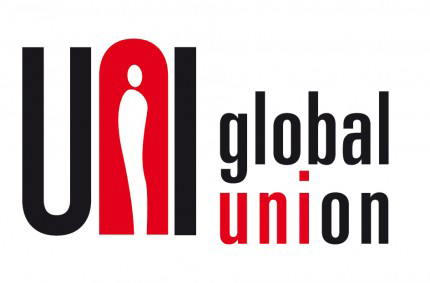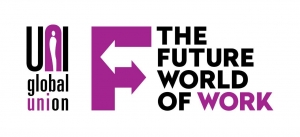News
Bailing out financial capitalism: what governments must demand

Statement by the TUAC Secretariat
http://www.tuac.org/print/en/public/e-docs/00/00/03/13/document_news.phtml
The dramatic events on the US and global financial markets in the past days – the collapse of Lehman Brothers, the takeover of Merrill Lynch by Bank of America and not least, the government bailing out of AIG, the largest insurer in the US – have changed the nature of the financial crisis. The crisis proves to be a far more serious threat to the integrity of the global financial system than OECD governments and financial authorities anticipated a year ago when the crisis erupted. Financial authorities are not equipped with the needed regulatory tools to handle this crisis. The emergency action to support financial institutions that are too big to be allowed to go bankrupt is necessary. But it is unacceptable that governments nationalise the losses of financial capital and privatise the profits. The quid pro quo must be properly regulated financial institutions. International cooperation should go far beyond what is currently under consideration – ie. reviewing prudential rules for banks and “encouraging” more transparency on the market place. It is the national and global regulatory architecture that needs to be restored so that financial markets return to their primary function: to ensure stable and cost-effective financing of the real economy.
The continuing uncertainty about where credit risks and losses are located as a result of the collapse of the US mortgage market and the incapacity of central banks and other supervisory authorities to re-establish minimum levels of market confidence have triggered reactions in chain in the global financial system. The inter-bank lending market has ceased to function despite repetitive liquidity injections by central banks. A year after the deepening of the crisis, banks, insurance groups and other regulated institutions continue to disclose new write downs to their balance sheets, while credit ratings are downgraded.
If it were not for the impact on the real economy and on working families, there would be irony in witnessing the past two decades of frantic financial de-regulation reforms that swept throughout the OECD ending with the largest nationalisation programme in modern history of the financial sector. In less than two weeks in September, the US authorities have gained effective control of the entire mortgage lending industry (the $200bn bailing out of Fannie Mae and Freddie Mac on 7 Sep.) and of the dominant player on the insurance market (control of AIG against a $85bn funding). They have agreed to a partial transfer onto taxpayers of the credit risks that was created by the subprime crisis by way of broadening the range of collaterals accepted for the liquidities injected by the Federal Reserve Bank. They have also exposed government money in the on-going restructuring of the investment banking sector with the takeover of Bear Stern by JP Morgan in March. The scale of the US government’s interventionism contrasts with the weak response by the financial private sector that was supposed to apply “self-corrective measures” to the crisis. The long awaited announcement earlier this week of ten large US financial institutions to pool together a $70bn liquidity fund comes too little and too late in the crisis.
The immediate consequences of the brutal deepening of the crisis have been a fall in global stock market indices, and a continuing tightening of lending standards. One can only expect further downward revisions of economic outlook forecasts. The US government debt has doubled instantly as the result of the recent bail outs, which should put further pressure on the US budget deficit, and hence on the Dollar exchange rate in the face of persistent structural imbalances within the OECD, with China and other emerging economies. For now, the direct exposure of financial markets in Europe and in Japan appears to be measured.
OECD governments are at a turning point. Central banks, treasuries and exchange authorities are not equipped with the needed regulatory tools to handle the current insolvency crisis. The monetary reaction operated by OECD central banks since the beginning of the crisis – easing access to short term government loans and/or reducing lead interest rates – were necessary to manage liquidity dry ups but insufficient to re-establish market confidence. The light regulatory approach that has prevailed in the past decade has nurtured a culture of excessive leveraging among financial institutions. This was favoured by lightly regulated entities such as hedge funds and private equity, but also by main street investment banking groups which are not subject to the same prudential rules than deposit banks. The toxic effect of leveraging was amplified by the financial “innovation” of the originate-and-distribute model of securitisation of debt: bad debt was traded under the guise of “structured products”.
The task of regulators has become impossible: not only do these “alternative” products and investment entities escape from their oversight, overseeing the activities of main street financial groups have also become a complication for them. Rather than increasing competition among institutions, the dis-intermediation of the financial system has given birth to global conglomerates that cumulate different lines of businesses which are subject to different regulations and hence different supervisory authorities. The collapse of the US giant AIG was precipitated not by its core activities in the highly regulated life insurance business, but by “AIG Financial Products”, the derivative trading subsidiary that the parent company of AIG had set up in the late 1980s.
This year, the G8 Summit in Hokkaido Japan expressed strong support for the recommendations of the Financial Stability Forum in its report “Enhancing Market and Institutional Resilience” in April. The FSF calls among others for the strengthening of banks’ capital requirement for structured credit product and off-balance sheet exposures, of banks’ own risk management procedures, for new accounting valuation of structured products, stronger oversight of rating agencies and more broadly for international cooperation to “encourage financial institutions to improve the quality of disclosures” about “complex and other illiquid instruments”. As welcome as these recommendations may be – many of which relying on private sector voluntary cooperation – they seem seriously inadequate.
In its annual statement to the G8, the Global Unions denounced “a growing divergence between unregulated and unmanageable financial markets on one hand and the financing needs of the real economy to provide decent work on the other”. According to the OECD, the international financial architecture should be judged upon its capacity to “maintain financial stability by ensuring solvency of market participants”, to “protect investors” against failures and frauds, and “to ensure efficient and effective financial markets”. This week, the system failed to deliver on all three objectives. International cooperation, including the OECD and the IMF, must aim at a concerted return to ensuring that all sources of financial capital are effectively regulated and public confidence in the system is established.
The regulatory implications of the crisis will be addressed at a meeting of TUAC affiliates senior economists on 29-31 October at the OECD in Paris, in partnership with the Global Unions and the ETUC. They will be discussing the launching of a trade union blueprint on effective financial regulation.
weblink:

